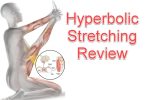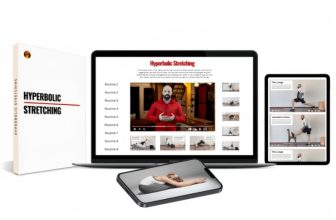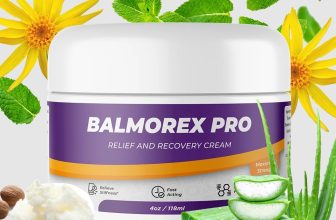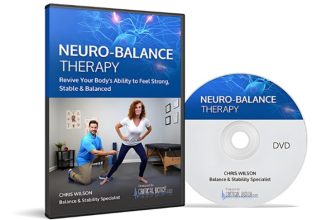Top Hyperbolic Stretching Benefits for Improving Stamina
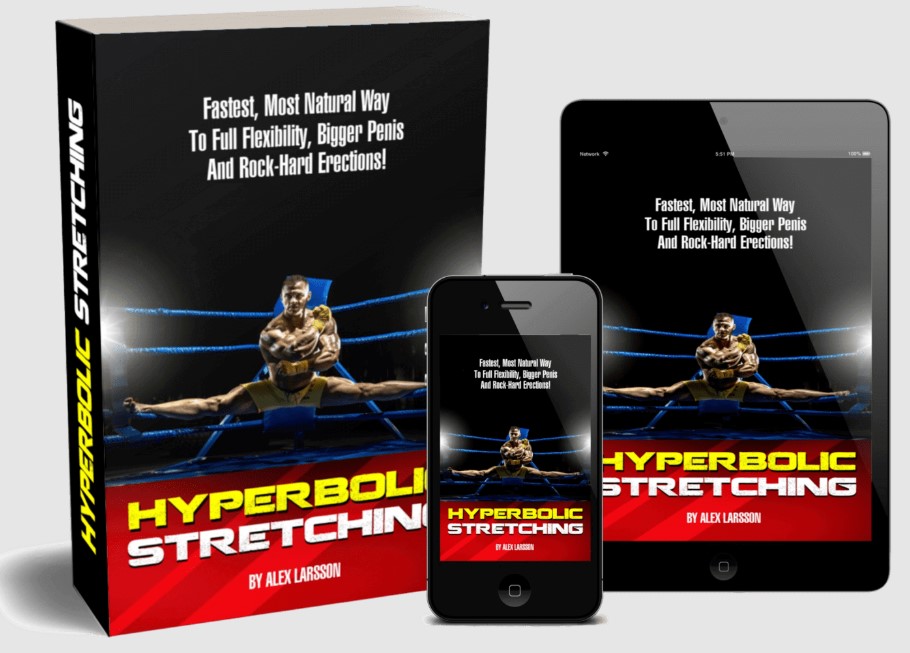
Hyperbolic Stretching is an increasingly popular program that promises enhanced flexibility, pelvic floor strength, and overall improvements in well-being—all through just eight minutes of stretching a day. Developed by Alex Larsson, this gender-specific program has generated excitement and some skepticism alike. But what sets Hyperbolic Stretching apart from traditional stretching techniques? Is it truly effective? In this comprehensive review, we will examine the major components of Hyperbolic Stretching and the benefits it offers, especially for those looking to improve stamina and physical performance.
The Origins of Hyperbolic Stretching
Hyperbolic Stretching was created by Alex Larsson, a former computer programmer whose sedentary lifestyle led to what he describes as a “total neuro-muscular shutdown.” This experience pushed Larsson to develop a program focused on regaining flexibility, improving strength, and enhancing stamina through stretching. Larsson’s transformation from a sedentary individual to a flexibility advocate provides the foundation for the program’s credibility. This section will explore Larsson’s journey, detailing how his experiences helped him develop a program that has become popular worldwide for its accessibility and effectiveness.
How Hyperbolic Stretching Works: The Science Explained
The core of Hyperbolic Stretching lies in its promise to override the body’s “tension reflex” or “survival reflex”—mechanisms that limit flexibility to prevent injury. By gradually extending the stretch reflex and activating muscle groups, the program aims to enable users to achieve new flexibility levels, including full splits. Here, we will delve into the science behind Hyperbolic Stretching:
- Tension Reflex: This reflex is the body’s natural defense mechanism to prevent overstretching, and Hyperbolic Stretching claims to work by overriding this reflex, allowing for deeper stretches.
- Five Phases of the Program: The program is divided into phases that include a warm-up, split test, weekly exercises, and maintenance routines.
- Neuromuscular Impact: Understanding how stretching impacts muscle fibers and joints helps explain why consistent practice of Hyperbolic Stretching can lead to increased stamina, improved strength, and greater flexibility.

The Promises and Claims of Hyperbolic Stretching
Hyperbolic Stretching makes several ambitious claims regarding its impact on flexibility, stamina, and overall health. These claims include:
- Enhanced Flexibility: It aims to increase flexibility significantly, enabling users to do full splits and complex yoga poses.
- Improved Core and Pelvic Floor Strength: The exercises are designed to engage the core and pelvic floor muscles, which can help improve stamina during workouts or physical activities.
- Boosted Energy and Hormonal Benefits: Hyperbolic Stretching also claims to enhance overall energy, improve intimate performance, and stimulate the production of growth hormones. This section will analyze each of these claims based on available evidence and user testimonials.
Expert Opinions and User Experiences
Many fitness enthusiasts and professionals have shared their opinions about Hyperbolic Stretching:
- Dr. Daniel Lopez, a chiropractor, believes that the program is effective for individuals dealing with chronic tightness, particularly in the lower back and legs. However, he mentions that the exercises can be challenging and sometimes uncomfortable for beginners.
- Chris Worfolk, a triathlete and psychologist, conducted a personal experiment with Hyperbolic Stretching. Although he did notice improvements, the progress was moderate, suggesting that results can vary from person to person.
User reviews indicate that Hyperbolic Stretching has helped many achieve increased flexibility, reduced muscle tension, and better stamina. However, some users found the exercises difficult to perform without prior fitness experience, which is important to consider before starting the program.
Comparative Analysis with Traditional Stretching Techniques
There are many methods used to improve flexibility, such as Static Stretching, Dynamic Stretching, and PNF (Proprioceptive Neuromuscular Facilitation). In this section, we’ll explore how Hyperbolic Stretching compares with these traditional approaches:
- Static vs. Hyperbolic Stretching: Static stretching involves holding a stretch for a period of time, which can be effective for flexibility. Hyperbolic Stretching, however, emphasizes deep, intentional movements that target both flexibility and stamina, making it more dynamic in nature.
- Dynamic Stretching: Hyperbolic Stretching incorporates elements similar to dynamic stretching, focusing on active movements to enhance flexibility.
- PNF Stretching: While PNF involves resistance and relaxation to improve flexibility, Hyperbolic Stretching seeks to achieve similar outcomes but through a more structured, time-efficient approach.
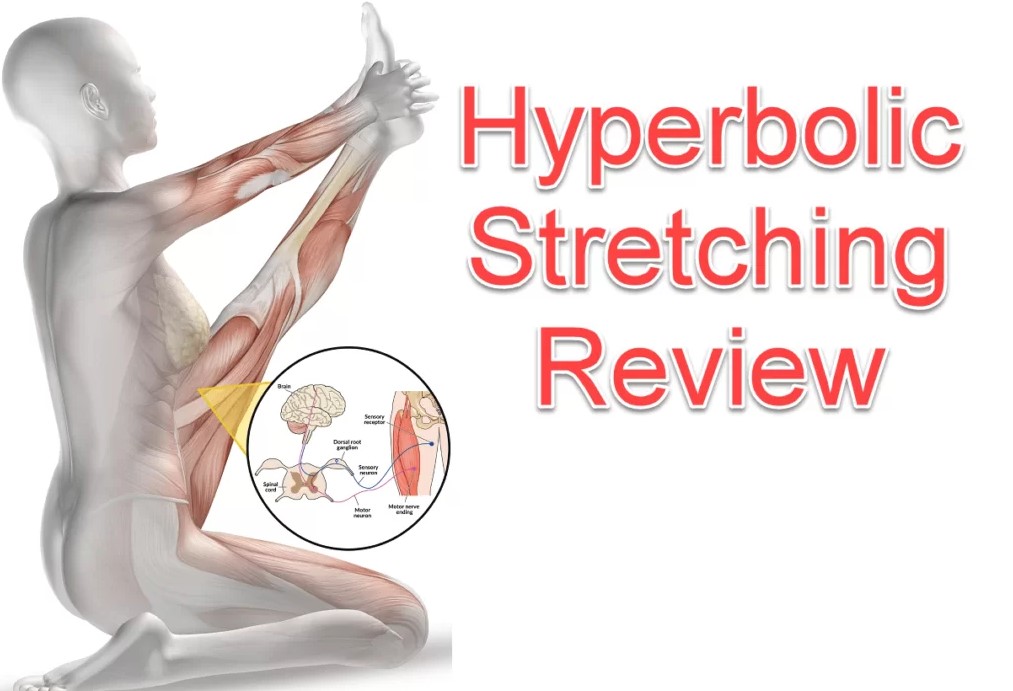
The Role of Physiology and Biomechanics in Hyperbolic Stretching
Understanding the physiological impact of Hyperbolic Stretching on the body is key to recognizing its benefits:
- Muscle Response: Stretching affects muscle length and elasticity. The Golgi tendon organ and reciprocal inhibition play crucial roles in muscle response to stretching.
- Pelvic Floor Muscles: Hyperbolic Stretching targets the pelvic floor muscles, which is linked to better core stability and increased stamina.
- Biomechanical Analysis: Joint mechanics and muscle lengthening are fundamental to successful stretching routines. Here, we will discuss how Hyperbolic Stretching affects joint health and whether there are increased risks of injury compared to more conventional methods.
User Results: Success Stories and Challenges
The success of Hyperbolic Stretching is largely reflected through user experiences. In this section, we will explore:
- Success Stories: Many users have achieved significant gains in flexibility, reporting their ability to do full splits or maintain challenging yoga poses. This enhanced flexibility is often linked to improved performance in various physical activities.
- Challenges: Not all users find the program easy to follow. Some have reported discomfort, particularly in the initial phases of the program. The most common challenges include muscle soreness and difficulty in maintaining consistency.
- Target Audience: Hyperbolic Stretching seems to be more suitable for individuals who already have a moderate level of fitness. Beginners might struggle more, and modifications might be necessary to ensure a safe experience.
Unique Features and Differentiators
Hyperbolic Stretching differentiates itself from other flexibility programs through several unique aspects:
- Time Efficiency: The program promises benefits through just eight minutes of daily stretching, making it accessible for those with busy schedules.
- No Warm-Up Required: Unlike many stretching routines, Hyperbolic Stretching claims that it does not require a warm-up, although some experts disagree with this assertion due to the risk of injury.
These unique elements make the program attractive to many users, but the absence of a warm-up can be risky for some, especially beginners.
Flexibility and Overall Health Benefits
Flexibility is associated with numerous health benefits, including:
- Reduced Injury Risk: Improved flexibility is linked to a reduced risk of injury during workouts or daily physical activities.
- Better Posture and Mobility: Increased flexibility helps reduce muscle tension, leading to better posture and improved ease of movement.
- Mental Health Benefits: Stretching has also been associated with better relaxation and reduced stress, contributing to overall well-being.
Hyperbolic Stretching promotes these benefits by incorporating flexibility exercises that focus not just on muscle lengthening but also on enhancing core strength and balance.
The Reality Behind Key Claims: What Science Says
Hyperbolic Stretching makes several bold claims, and in this section, we assess them through the lens of scientific evidence:
- Human Growth Hormone (HGH) Production: The program claims to stimulate the production of HGH. While intense physical activities are linked to HGH production, the direct impact of stretching alone is still debated.
- Sexual Performance: Hyperbolic Stretching emphasizes the role of pelvic floor exercises in enhancing sexual performance. Strong pelvic floor muscles are indeed linked to improved intimate experiences, but the program’s specific claims require further validation.
- Fat Loss: While stretching can help tone muscles and improve circulation, it is not as effective as aerobic or resistance training for burning fat. However, combining stretching with a well-balanced exercise regimen can contribute to overall fitness.
Conclusion: Should You Try Hyperbolic Stretching?
In conclusion, Hyperbolic Stretching offers a unique approach to flexibility and strength enhancement. The program’s focus on overcoming the tension reflex and achieving full splits is ambitious, but achievable for many users willing to put in consistent effort. Here’s a balanced summary:
- Benefits: Users can expect improved flexibility, increased stamina, and reduced muscle tightness with consistent practice. Enhanced core and pelvic floor strength can contribute to better performance in various physical activities.
- Limitations: The program’s claim of achieving significant results with just eight minutes of stretching might not be sufficient for everyone. Additionally, the lack of scientific validation for some claims, such as HGH production, should be taken into account.
- Who Would Benefit: This program is particularly beneficial for athletes, dancers, and those who want to improve their flexibility and stamina. Beginners might find it challenging without modifications or additional warm-up exercises.
If you are looking to improve flexibility, boost stamina, and are willing to commit to a structured stretching routine, Hyperbolic Stretching could be worth exploring. However, it’s important to approach the program with realistic expectations and to consider consulting a healthcare

